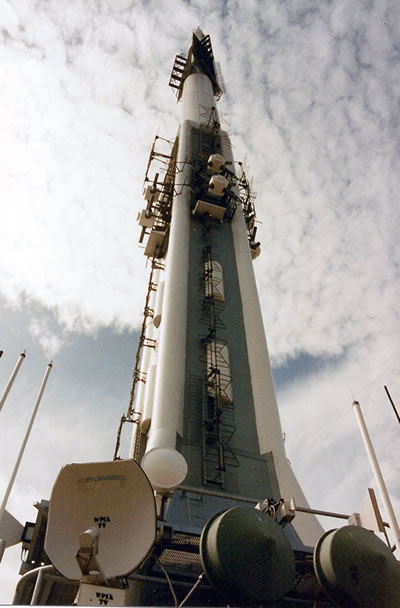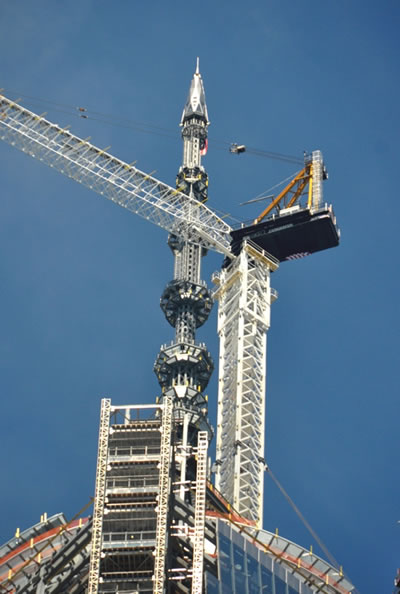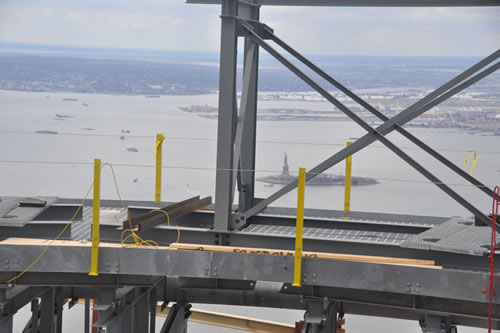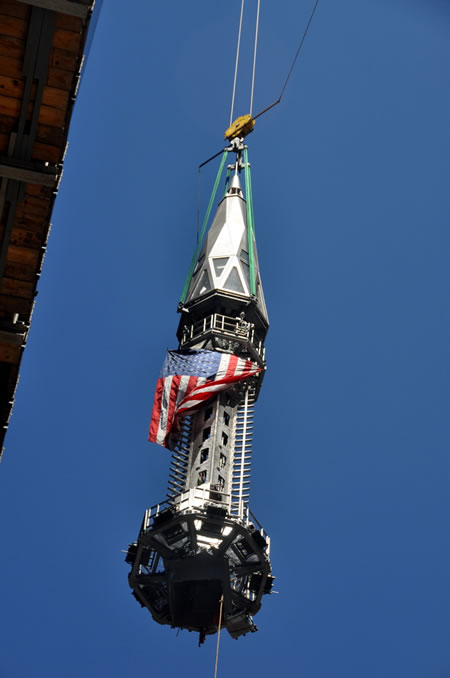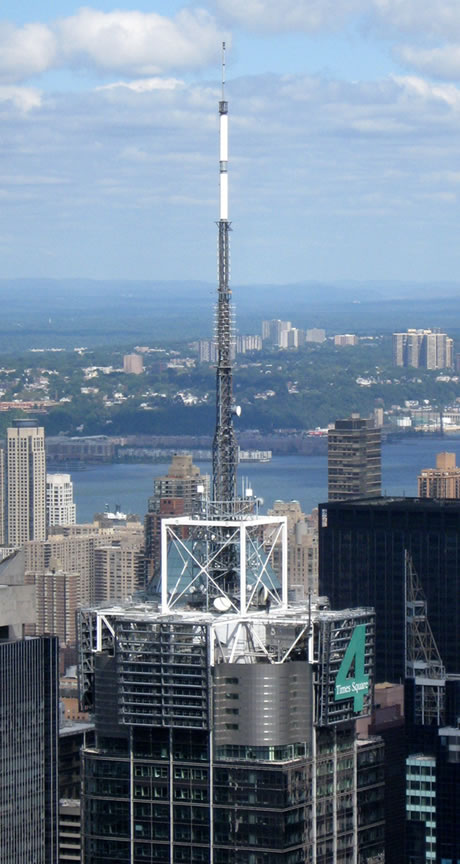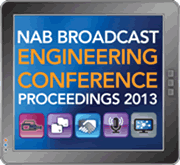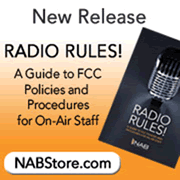|
|

|
RE-ESTABLISHING ONE WORLD TRADE CENTER AS A MAJOR COMMUNICATIONS HUB IN NYC
The spire is finally in place; the building has reached 1776 feet and is now the tallest building in North America. Now the process begins to re-establish the communications community atop the building. Prior to 9/11 television broadcasters in New York City with the exception of Univision (who moved to the Empire State Building in 1991) and WNYE (the station of the NYC Board of Education) all operated atop One World Trade Center. In addition, four of the market's FM stations were in operation there. Sharing space at 1 WTC with the broadcast facilities were telecommunications facilities including point-to-point microwave, ENG, RPU and two-way radio for broadcasters and non-broadcasters. The entire rooftop was set up to handle whip antennas spaced to avoid near-field coupling, with cable tray and troughs to handle getting the cables back to communications rooms.
Instead of a flat rooftop on which to place two-way radio antennas, the configuration at the base of One World Trade Center spire includes three "Communications Rings". This space will allow us to place many antennas on each level, depending on operation. Satellite down-links, ENG, RPU, point-to-point microwave (fixed and steerable), two-way radio antennas, fixed and steerable cameras, relay links, etc. are just a few of the types of communication equipment that will be atop the building. The broadcast space will be powered by a shared emergency generator in addition to Con Edison power. It will have building- supplied cooling dedicated to the broadcasters with a means to have direct transmitter and rack cooling as required. Power will be supplied to individual broadcasters with final hookup to their equipment to be performed by their own contractor. The master antennas, combiner mainframes and combiner- to- antenna interconnecting transmission lines are to be provided by Durst Broadcasting LLC. Broadcasters only need to supply their own transmitters, terminal equipment, combiner modules and internal connecting cables. The facility is being designed as a plug and play facility and as such, installation of future stations will require minimal down time due to the installation of individual station combiner modules into the shared combiner system.
A communication
room for the commercial users, with building-supplied emergency
power and cooling, will be located near the communications rings
to allow for short transmission line runs between equipment and
antennas. A pathway for transmission lines will be provided and
assigned to allow use by all broadcasters and other communications
occupants. Other equipment space will be provided by the Port Authority
of New York and New Jersey for their related agencies and certain
public users, as well as antenna space on the Communications Rings.
One World Trade Center is a Joint Venture between the Port Authority
of New York and New Jersey and The Durst Organization. The rooftop
has been leased by Durst Broadcasting LLC, which will run the broadcast
facility on behalf of the partnership, for all broadcasters and
communications users. The Durst Organization is also responsible
for management, leasing and operations of One World Trade Center.
|
|||||||||||||
| TV
Stations Must Comply with New Accessible Emergency Crawl Rules by
May 26, 2015 On April 8, 2013, the FCC released a Report and Order (R&O) adopting rules requiring that television stations make their emergency crawls more accessible to individuals who are blind or visually impaired. The new rules require emergency information that appears visually during a non-news program (such as when information about emergencies appears as crawls on the bottom of the television screen during a regularly scheduled program) to be provided aurally on a secondary audio stream. The R&O (MB Docket No. 12-107) was published in the Federal register on May 24th 2013 making the rule effective as of May 26, 2015. For more information see April 29 2013 TV TechCheck. 2013
NAB Broadcast Engineering Conference Proceedings The June 3, 2013 TV TechCheck is also available in an Adobe Acrobat file. Please click here to read the Adobe Acrobat version of TV TechCheck.
|
|||||||||||||
